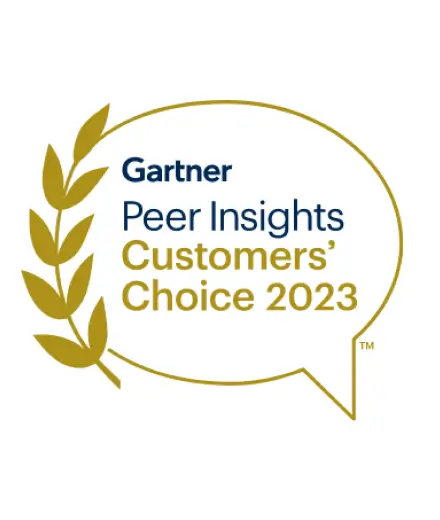Executive summary
Mastering the Request for Proposal (RFP) process is essential in the complex world of business procurement. This article is a deep dive into the intricacies of RFPs, covering everything from the basics to advanced strategies. We’ll explore what an RFP is, the key players involved, and the circumstances that necessitate its issuance. The article also compares RFPs with other procurement documents like RFQs and RFIs, offering a comprehensive view of each. Essential for businesses seeking to optimize their procurement process, this guide includes a step-by-step approach to writing an RFP.
The business landscape is constantly evolving, and every decision can significantly impact success. In such a landscape, the Request for Proposal (RFP) stands as a beacon of strategic procurement. Imagine navigating the high seas of business contracts and collaborations without a compass; that’s where the RFP comes in – as your compass, guiding through the complexities of major business decisions. Today, where accurate information and strategic alignment are paramount, the RFP process offers a structured approach to evaluating vendors and proposals, ensuring that businesses align their project needs with the best possible solutions.
The art of creating and responding to an RFP is as intricate as it is critical. It involves not just understanding what you need but also communicating those needs effectively to potential partners. With stakes often high and competition fierce, a well-crafted RFP can be the difference between a successful partnership that propels a business forward and a misstep that could cost dearly. This article aims to decode the RFP process, offering insights and tools to help businesses navigate this vital aspect of strategic procurement with confidence and clarity.
What is a Request for Proposal (RFP)?
At the core of every strategic business decision, especially in procurement, lies the crucial tool known as the Request for Proposal, commonly referred to as RFP. An RFP is a formal document that an organization issues when it seeks to acquire a specific product or service. But it’s much more than just a request – it’s a detailed questionnaire inviting prospective vendors to present their best solutions tailored to the organization’s unique needs.
Imagine an RFP as a bridge connecting two critical business shores: on one side, an organization with specific requirements and goals, and on the other, a pool of potential vendors, each with unique capabilities and offerings. The RFP serves as a platform for these vendors to showcase how their solutions align with the organization’s objectives. This structured approach enables businesses to compare offerings systematically and objectively, ensuring a level playing field for all vendors.
But why is an RFP so pivotal? The answer lies in its comprehensive and meticulous nature. An RFP goes beyond mere price inquiries; it delves into the vendor’s approach, methodology, compatibility with the organization’s values, and long-term partnership potential. It’s a tool that aids in making informed decisions, not just for immediate needs but for future scalability and sustainability.
The RFP process itself is a journey of discovery and analysis. It begins with the organization outlining its project scope, requirements, and expectations. It is followed by the dissemination of the RFP to potential vendors, who then submit their proposals. The organization then evaluates these proposals based on predefined criteria, which often include factors like cost, technical capabilities, and vendor reputation. The aim is not just to find a vendor but to forge a partnership that drives mutual growth and success.
Basic RFP: Unlocking the essentials for businesses
Navigating the landscape of a Request for Proposal (RFP) can seem daunting. However, understanding its essential components can transform it into a powerful tool for any business. Let’s break down the essentials of an RFP and explore the key elements that make it a cornerstone of strategic procurement.
Who is involved in the RFP process?
The RFP process is a collaborative symphony involving various stakeholders, each playing a crucial role. At the forefront are the business stakeholders — the initiators of the RFP, who identify the need for a product or service and are deeply involved in defining the project requirements. Then, there are the procurement professionals, the conductors of this symphony, overseeing the entire process, from drafting the RFP to finalizing the vendor selection.
In some cases, external consultants step in, lending their expertise to navigate the complexities of the RFP process. Their role is vital, especially when an organization lacks in-house expertise. At the decision-making level, we often find executives, CFOs, and CPOs who weigh in on the final approval, scrutinizing costs and aligning the project with broader organizational goals. And, of course, there are the vendors, the responders to the RFP, who present their proposals in the hope of forming a partnership.
Why do organizations issue RFPs?
The essence of issuing an RFP lies in its ability to empower organizations to make informed, strategic decisions. RFPs are particularly crucial when the stakes are high — where the wrong choice could lead to significant financial and operational repercussions. They provide a structured framework to compare multiple vendors systematically, focusing not just on cost but also on quality, capability, and fit with the organization’s needs.
RFPs level the playing field, encouraging competitive pricing and fostering transparency. They ensure that the selection process is unbiased, data-driven, and justifiable. For high-value projects, this is indispensable. Moreover, RFPs are instrumental in risk mitigation, allowing businesses to thoroughly vet potential vendors’ compliance, security practices, and overall stability before entering into a contractual relationship.
When should you issue an RFP?
Deciding when to issue an RFP is a strategic choice. It’s not about the frequency of issuing RFPs but about knowing when they are necessary. Typically, RFPs are reserved for significant, high-impact projects or when the procurement involves a substantial financial investment. Businesses often set a financial threshold; if a project exceeds this amount, an RFP becomes essential.
An RFP is a correct approach when the project’s complexity demands detailed responses from potential vendors, and there’s a need for thorough comparative analysis. It’s about finding the right fit — a vendor who not only offers a competitive price but aligns with your project’s objectives and your organization’s ethos.
Real-time support at scale with generative AI

Benefits of a Request for Proposal (RFP)
Understanding the benefits of a Request for Proposal (RFP) is essential for any business aiming to optimize its procurement process. Let’s explore the advantages of employing RFPs, highlighting how they can be a transformative tool in strategic business procurement.
1. Broadening horizons with qualified candidates
An RFP is not just a request; it’s an invitation for capable and competitive vendors to step forward. It serves as an open call, bringing in a diverse range of proposals from various providers. This inclusivity enriches the pool of potential partners, ensuring that businesses have access to the best solutions available in the market.
2. Promoting transparency and integrity
Particularly in government contracts, the RFP process is a bastion of fairness and impartiality. It ensures that contracts are awarded based on merit and suitability rather than personal connections or favoritism. This level of transparency is vital for public trust and for businesses that value integrity in their operations.
3. Encourages healthy competition
By its very nature, an RFP fosters competition among vendors. This competition is beneficial for businesses as it can lead to more competitive pricing, innovative solutions, and higher-quality services. Vendors, knowing they are up against their peers, are motivated to put their best foot forward.
4. Ideal for complex endeavors
For complex projects that require a blend of technologies and services, RFPs are invaluable. They allow businesses to solicit comprehensive solutions that address all aspects of the project, from hardware and software to user training and support. This holistic approach is essential when transitioning to new systems or integrating multiple technologies.
5. Ensuring open and fair competition
Particularly in the public sector, RFPs are a mandate for open and fair competition. They level the playing field, giving every potential vendor an equal opportunity to present their proposal, thereby fostering a healthy competitive environment that benefits your project. This process is crucial for fairness and transparency.
6. Not just about the lowest price
While price is a significant factor, RFPs enable businesses to look beyond just the cost. They allow for an evaluation based on responsiveness to the requirements, quality of the solution, and the vendor’s track record. This comprehensive assessment ensures that the selected vendor offers the best value rather than just the lowest bid.
7. Crafting responses for optimal solutions
The way an RFP is crafted can significantly influence the quality of responses from vendors. A well-structured RFP with clear, concise, and comprehensive requirements invites detailed and thought-out proposals. This clarity helps vendors understand the business’s needs, leading to more tailored and effective solutions.
8. Striking a balance between innovation and requirements
A carefully balanced RFP provides enough detail to guide vendors while leaving room for creativity and innovation. This balance is crucial for eliciting solutions that are both aligned with the business’s specific needs and innovative in their approach.
RFP vs. RFQ vs. RFI: Navigating the procurement waters
Understanding the differences between a Request for Proposal (RFP), Request for Quotation (RFQ), and Request for Information (RFI) is crucial. These documents, while serving a common purpose of vendor engagement, differ significantly in their approach and utilization. Let’s demystify these essential procurement tools through a comparative analysis, providing a clear understanding of when and how to use each effectively in your business processes.
Here’s a table that briefly outlines the critical differences between RFP, RFQ, and RFI:
| Basis for Comparison | RFP (Request for Proposal) | RFQ (Request for Quotation) | RFI (Request for Information) |
| Primary Purpose | RFPs are comprehensive documents that solicit detailed proposals for complex projects or services, focusing on how vendors plan to meet specific requirements and objectives. | RFQs are focused on obtaining pricing information for specific products or services, emphasizing cost rather than solution approach or methodology. | RFIs are used to gather general information about products, services, or vendors. They are typically the first step in the procurement process, helping businesses understand what solutions are available. |
| Content and scope | RFPs include detailed project specifications, requirements, and criteria for evaluation. They often require vendors to provide a holistic solution encompassing methodology, timelines, and pricing. | RFQs are more straightforward, requesting clear pricing information for a specified quantity and quality of goods or services, with less emphasis on how the vendor plans to deliver. | RFIs are broad and exploratory, asking for general information about vendor capabilities, experience, and potential approaches to addressing a need or problem. |
| When to Use | RFPs are ideal for complex, high-value projects where the solution approach, vendor expertise, and creativity are as important as cost. | RFQs are suitable for situations where the requirements are clear-cut, and the main deciding factor is price. | RFIs are used when a business is in the exploratory phase, seeking to understand the market landscape, available solutions, and potential vendor capabilities. |
| Vendor Response | Responses to RFPs are comprehensive proposals detailing how the vendor plans to meet the project needs, their qualifications, and a breakdown of costs. | Responses to RFQs are primarily focused on price quotes for the requested products or services. | Responses to RFIs provide broad information about the vendors’ services, products, and capabilities without specific pricing or project plans. |
| Outcome | RFPs lead to selecting a vendor based on a combination of factors, including solution fit, expertise, and cost. | RFQs result in choosing a vendor based on the best price for the specified need. | RFIs help in shortlisting potential vendors for future RFQs or RFPs based on their capabilities and alignment with business needs. |
Understanding these distinctions allows businesses to choose the right tool for their procurement strategy. Whether it’s a complex project requiring a thorough RFP process, a specific need best addressed through an RFQ or an exploratory phase suited for an RFI, each document plays a critical role in successful procurement and vendor management.
Using these tools strategically ensures that businesses not only procure the right resources at the best value but also establish relationships with vendors that align with their long-term goals and project requirements. In the dynamic world of business procurement, knowing when and how to use RFPs, RFQs, and RFIs can make a significant difference in achieving successful outcomes.
How to write a Request for Proposal (RFP) with template
Crafting a Request for Proposal (RFP) is a critical step in the procurement process, acting as a beacon for attracting the right vendors. It’s not just a document; it’s a strategic communication tool that reflects your business’s needs, expectations, and vision for the project. Let’s break down the essential steps to write an effective RFP that resonates with potential vendors and sets the stage for a successful partnership.
Step 1: Define your project, scope, and budget
Crafting an RFP begins with a clear definition of your project. It is where you lay the groundwork for what you’re looking to achieve. Start by describing the project in detail. What are its objectives? What specific outcomes are you expecting? It is not just about listing requirements; it’s about painting a picture of the end goal. The scope of the project is equally important. Detail the boundaries and limitations of the project. What are the must-haves, and what can be flexible?
Next, address the budget. It’s crucial to establish a clear budget framework upfront. Be transparent about the financial limits while being realistic about what can be achieved within this budget. This step is a balancing act – you want to attract quality vendors without setting unrealistic financial expectations. A well-defined budget also helps in assessing the feasibility and value-for-money of the proposals you will receive.
Step 2: Provide background and introductory information
To engage potential vendors effectively, give them a snapshot of your organization. What is your company’s mission? What market do you operate in, and what are your strategic goals? Providing this background information helps vendors understand your business environment and the broader context of the RFP. It’s not just about what you need; it’s about why you need it.
Include a brief history of your organization, any significant achievements, and the challenges you’re currently facing. This information can help vendors tailor their proposals more effectively to your specific context. Don’t forget to include essential contact information. Who can vendors reach out to if they have questions? Transparency and open lines of communication are key to a successful RFP process.
Step 3: Describe the services you’re looking for
It is arguably the most crucial part of your RFP. You need to be clear and concise about the services or products you require. Break down the requirements into specific components. If it’s a service, what are the key deliverables? If it’s a product, what are the required specifications? This section should leave no room for ambiguity.
It’s helpful to use bullet points or numbered lists for clarity. Remember, the goal is to make it easy for vendors to understand and respond to your needs. Think about any unique aspects of your project that vendors should be aware of. Are there specific industry standards or regulations they need to comply with? Are there particular technological requirements or integration needs? The more specific you are, the more targeted and relevant the responses will be.
Step 4: Explain any challenges or barriers to success
No project is without its challenges, and it’s vital to be upfront about them in your RFP. It could include technical limitations, regulatory hurdles, or potential resource constraints. Being transparent about these challenges does two things: it sets realistic expectations, and it invites vendors to bring their problem-solving skills to the table.
Explain how these challenges might impact the project and what you are looking for in terms of solutions or workarounds. This honesty can foster a more collaborative relationship with your vendors and can lead to more innovative and effective solutions.
Step 5: Detail your selection criteria
The selection criteria are the benchmarks against which you will evaluate the proposals. It’s essential to be as detailed as possible in defining these criteria. What are the must-have qualifications or experience for a vendor? What are the deal-breakers?
It could include technical expertise, past project experience, pricing structure, customer service standards, or even corporate social responsibility practices. Be clear about how much weight each criterion will carry in your decision-making process. This level of detail helps vendors understand how to align their proposals with your priorities and also ensures a fair and transparent evaluation process.
Step 6: Specify your project’s timeline
A clear timeline is crucial for managing expectations and ensuring project success. Outline the key milestones of the project, including the submission deadline for the proposals, the time frame for evaluation, and the expected start and end dates for the project.
Be realistic in setting these timelines. Consider internal factors like decision-making processes and external factors like market conditions or vendor availability. A well-thought-out timeline demonstrates your commitment to keeping the project on track and shows respect for the vendors’ time and resources.
Step 7: Proofread your RFP and go live
The final step is to thoroughly review your RFP for clarity, coherence, and accuracy. Look out for any inconsistencies, typos, or unclear language. Remember, the quality of your RFP reflects the professionalism of your organization and sets the tone for the responses you will receive.
Once you’re confident that the RFP is comprehensive and clear, it’s time to publish it. Ensure it’s accessible to potential vendors, whether that’s through your organization’s website, industry platforms, or direct outreach. The launch of your RFP marks the beginning of a journey toward finding the right partner for your project, so make it count.
RFP template example
Project overview: [Brief description of the project and its objectives]
Company background: [Information about your organization, including history, market position, and challenges]
Scope of work: [Detailed description of the services required, including specific tasks and deliverables]
Project challenges: [Any potential barriers or obstacles to the project’s success]
Selection criteria: [List of criteria for evaluating proposals, such as experience, cost, and technical skills]
Timeline: [Key dates for proposal submission, decision-making, and project milestones]
Budget: [The financial limit for the project]
Example of an RFP: A practical guide for businesses
To solidify your understanding of the Request for Proposal (RFP) process, let’s look at a practical example. This section will demonstrate how the various elements of an RFP come together, providing businesses with a template they can adapt to their specific needs.
In this example, we’ll illustrate an RFP for a hypothetical company seeking to develop a new software application. This RFP will encompass all the critical components we’ve discussed, from project definition to selection criteria. It will offer a comprehensive view of how an RFP is structured and what information it should include.
1. Project overview
- Background: “XYZ Corp, a mid-sized retail company, is looking to develop a new inventory management software application. This project is part of our digital transformation initiative to improve operational efficiency and customer service.”
- Objective: “The goal is to create a user-friendly, scalable software application that integrates with our existing systems and provides real-time inventory tracking and reporting capabilities.”
- Budget: “Our budget for this project is $100,000, which includes development, testing, and implementation phases.”
2. Project goals
- Success criteria: “A successful outcome for this project would be a fully operational software application that is deployed within six months. The application should result in at least a 20% improvement in inventory management efficiency.”
- Milestones: “Key milestones include the completion of the initial design phase in two months, a beta version ready for testing in four months, and the final rollout in six months.”
3. Scope of work
- Requirements: “Vendors are expected to provide a detailed plan for the software’s design, development, and integration with existing systems. Proposals should include methodologies, technologies to be used, and a timeline for each project phase.”
- Vendor responsibilities: “The selected vendor will be responsible for all aspects of the software development, including initial analysis, design, coding, testing, and deployment.”
4. Roadblocks/barriers
- Challenges: “Potential challenges include integrating the new software with our legacy systems and ensuring minimal disruption to our current operations during the implementation phase.”
- Vendor input: “We encourage vendors to highlight any anticipated challenges and their proposed solutions in their proposals.”
5. Evaluation metrics
- Criteria: “Proposals will be evaluated based on the vendor’s experience with similar projects, the proposed solution’s alignment with our objectives, cost-effectiveness, and the proposed timeline.”
- Submission requirements: “All proposals must include detailed pricing, a project timeline, case studies of similar projects, and references from past clients.”
Real-time support at scale with generative AI

Conclusion: Charting a strategic course with RFPs
Requests for Proposals (RFPs) are a strategic pillar in business procurement. It’s not just about selecting a vendor; it’s about charting a course toward long-term partnerships and organizational success. The RFP process, with its detailed and systematic approach, stands as a testament to a business’s commitment to precision, efficiency, and foresight in decision-making.
Today, where decisions can pivot the direction of an entire organization, the RFP is a strategic tool. It empowers businesses to align their immediate project needs with broader organizational goals, ensuring that each partnership and investment is a step towards future readiness and growth.
Frequently asked questions
What is a Request for Proposal (RFP)?
A Request for Proposal (RFP) is a formal document used by businesses to outline specific requirements for a project and invite vendors to submit proposals. It serves as a comprehensive framework that allows businesses to evaluate potential partners based on their ability to meet these requirements, including their approach, methodology, pricing, and compatibility with the project’s goals.
What are the 7 steps in an RFP process?
The RFP process involves seven key steps: Firstly, identifying the project need. Secondly, drafting a detailed RFP document. Thirdly, the RFP should be distributed to potential vendors. Fourth is receiving and reviewing proposals. Next is to evaluate these proposals based on set criteria. The sixth step is selecting the most suitable vendor. Finally, negotiate and finalize the contract with the chosen vendor.
What is RFP vs RFQ?
An RFP (Request for Proposal) and an RFQ (Request for Quotation) are distinct procurement tools. An RFP is used when a business seeks a comprehensive solution to a complex project, requiring detailed proposals on how vendors will accomplish the project goals. In contrast, an RFQ is used when the primary need is to obtain price quotations for specific products or services, with less emphasis on the method of delivery or solution approach.
What are the 5 parts of an RFP?
An RFP typically consists of five main parts: Introduction, which provides an overview of the project and the issuing organization. Project Requirements, detailing the specifics of what is needed. Proposal Guidelines outline how vendors should format and submit their proposals. Selection Criteria, describing the basis on which proposals will be evaluated. Lastly, timeline and submission details indicate key dates and submission procedures.
What are the 3 sections of an RFP?
An RFP is generally divided into three sections: The first section covers the introduction and background, offering context about the issuing organization and the project. The second section details the specific requirements and scope of the project. The third section outlines the proposal submission guidelines and the criteria for evaluation.
What are RFP components?
Key components of an RFP include an overview of the organization and its objectives, a detailed description of the project and its scope, requirements, and specifications of the desired services or products, criteria for vendor selection, guidelines for proposal submission, and parameters for evaluation of proposals.
When would you use an RFP?
An RFP is typically used for complex projects where the quality of the solution, the expertise of the vendor, and the strategic approach are as critical as the cost. It is ideal for projects that require a detailed analysis of proposals to ensure that the chosen solution aligns well with the business’s objectives and future growth.
What happens after the RFP?
After issuing an RFP, the business receives and reviews proposals from various vendors. These proposals are evaluated based on predefined criteria. The business may engage in discussions or seek clarifications from vendors. Ultimately, a vendor is selected based on their proposal’s alignment with the project needs and business goals. Contract negotiations and formalizing the partnership follow this.




























